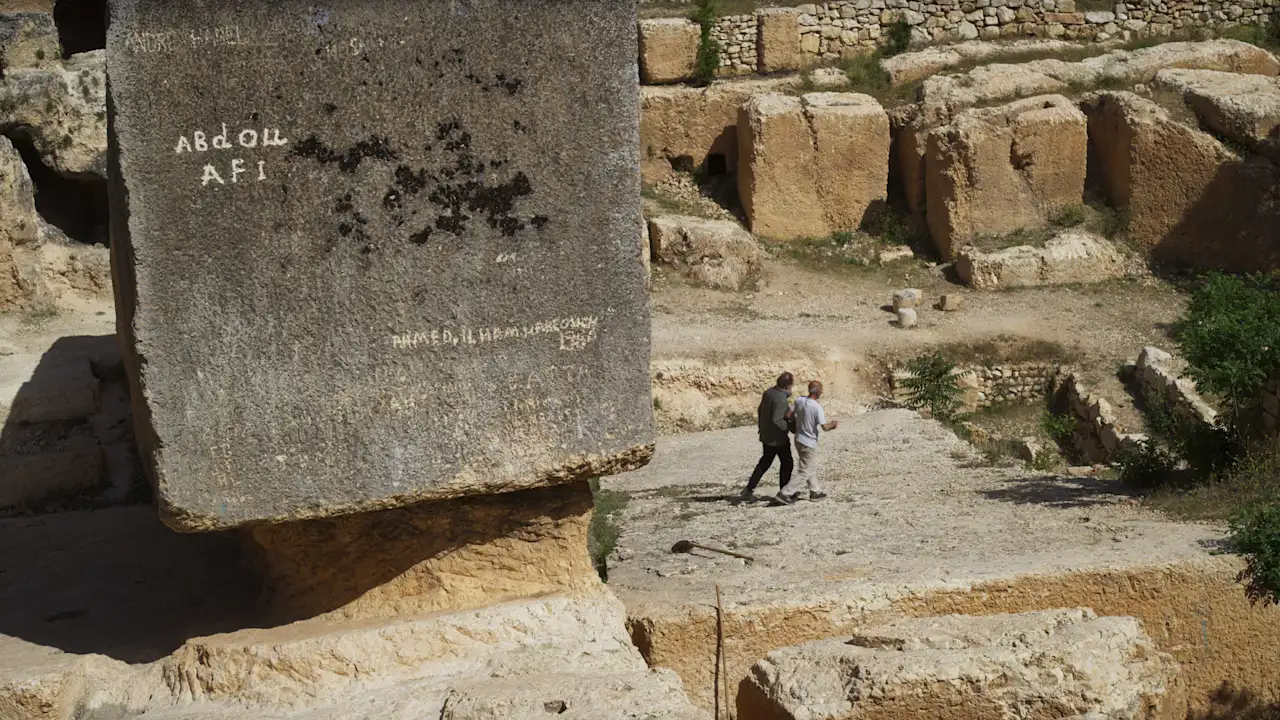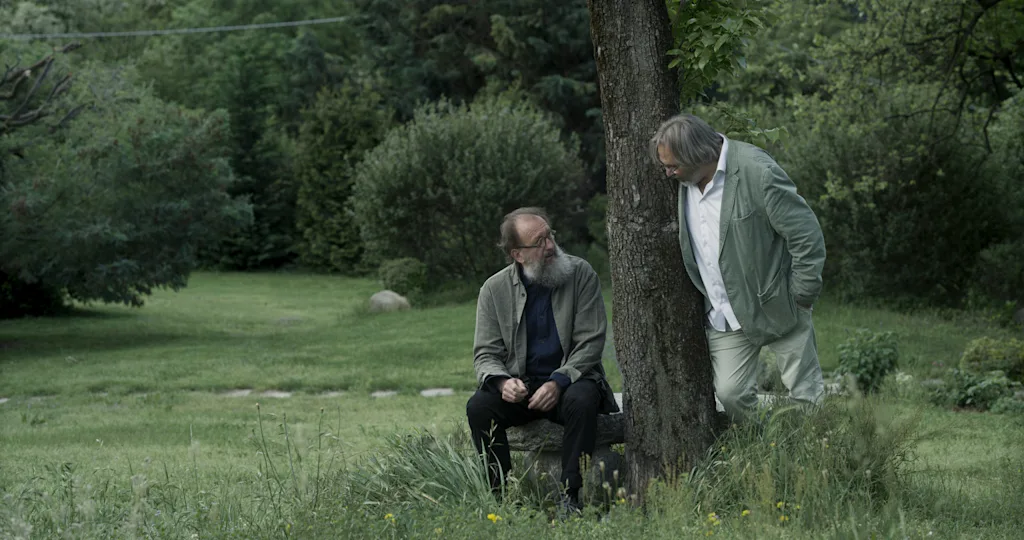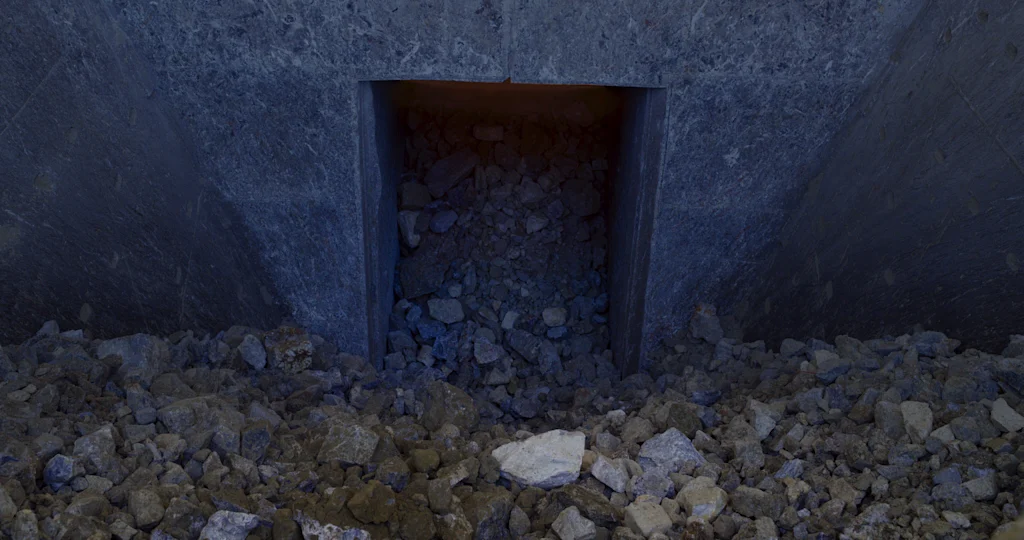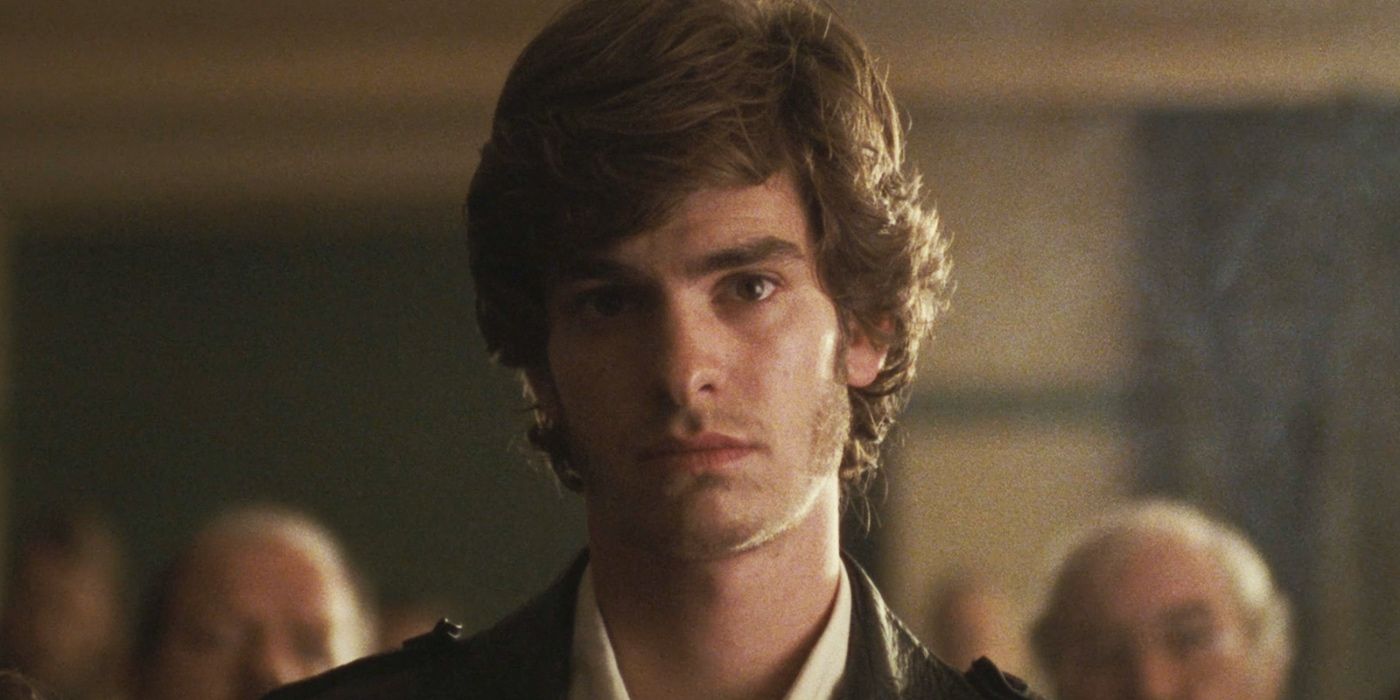A dazzling new film shows the devastating reality of building with concrete

Watching the side of a mountain get blown to bits in the new documentary Architecton, the shock is not just from the explosion but also from the quotidian end result of such brutal force.
The film by director Victor Kossakovsky shows the industrialized violence involved in creating concrete, the most widely used building material in the world, tracing it backward from building to mountain source.

Released in U.S. theaters on August 1 by A24, Architecton is a mostly dialogue-free film that documents the often-unseen production chain of concrete. It turns the process of creating concrete—the quarries, rock crushers, conveyor belts, and glowing furnaces—into spectacle. But it’s a spectacle with a high cost.
Kossakovsky’s dazzling shots have almost no measurable scale or frame of reference. They are reminiscent of the classic 1982 documentary Koyaanisqatsi or the photography of Edward Burtynsky. Like those works, Architecton uses its stunning visuals to comment on humanity’s remaking of the planet, revealing what it takes to create the modern world we inhabit.
A short-term solution
The scenes in Architecton that show the slow transformation from mountain to rock to concrete are counterbalanced with shots of buildings made of raw stone. Roman-era marble columns and rustic stone buildings in centuries-old villages serve as Kossakovsky’s rebuttal to the modern way of building with concrete.
Typical concrete buildings can last less than a hundred years. Kossakovsky calls them ordinary and ugly. “We have a history of architecture [dating back] thousands of years. We can open a book and say that’s a beautiful building. Why don’t we put it in our city?” Instead, he says, “We build strange rectangles from cement.”
Kossakovsky says the film was inspired by the Alexander Column in the main square of his hometown, St. Petersburg, Russia. Made from a solid, monolithic piece of red granite measuring more than 83 feet and weighing 600 tons, the column was erected in the 1830s in a feat of human engineering.
The filmmaker says he asked architects around the world why we don’t build things this way anymore, and walked away disillusioned by their focus on speed, economy, and subservience to the will of developers. One architect, Italian designer Michele De Lucchi, stood out.
A member of the famous Memphis design group of the 1980s, De Lucchi is a proponent of building with stone, and he plays a kind of starring role in Architecton, which features him having a stone circle built into the ground of his backyard and visiting massive stone megaliths from ancient history.

An unsustainable cycle
Architecton presents stone building as one solution, but the main focus for Kossakovsky is the problem: heavily polluting, energy intensive, and short-lived concrete. “The two biggest poisons of our time are sugar and concrete, in my opinion,” Kossakovsky says.
To underline the problems he sees with concrete, Kossakovsky’s film shows cities around the world where concrete apartment blocks have been turned to ruins, from earthquake epicenters to war zones. The film opens with a long sequence of aerial footage in bombed-out cities across Ukraine, including one devastating pan showing the side of an apartment building ripped open, exposing floor after floor of bisected living rooms.
Concrete is not the perpetrator of this particular brand of war crime, but Kossakovsky’s film hammers the idea that buildings made from concrete simply aren’t able to withstand the ravages of time. Tearing down these buildings after a few decades only to rebuild them for another few decades, the film argues, is part of the reason the climate has gotten so out of whack.

One poignant scene shows caravans of trucks hauling the wreckage of demolished buildings into a dump site that sits immediately adjacent to a mountain being quarried for the raw materials that will be used to rebuild. The cycle is not sustainable.
But concrete is cheap to build with, and Kossakovsky says that’s what keeps the cycle in motion. “For whom is it cheap? For us it’s cheap. For our grandsons it’s expensive, because our grandsons will demolish it and build again,” Kossakovsky says.
Building from stone, he argues, may cost more up front but will last for generations, and create a deeper connection between buildings and the people who inhabit them. The impact on the Earth will be less violent than what’s required to build the world with concrete. “If you build something from stone,” Kossakovsky says, “you only demolish the mountain once.”
What's Your Reaction?
 Like
0
Like
0
 Dislike
0
Dislike
0
 Love
0
Love
0
 Funny
0
Funny
0
 Angry
0
Angry
0
 Sad
0
Sad
0
 Wow
0
Wow
0




























































































